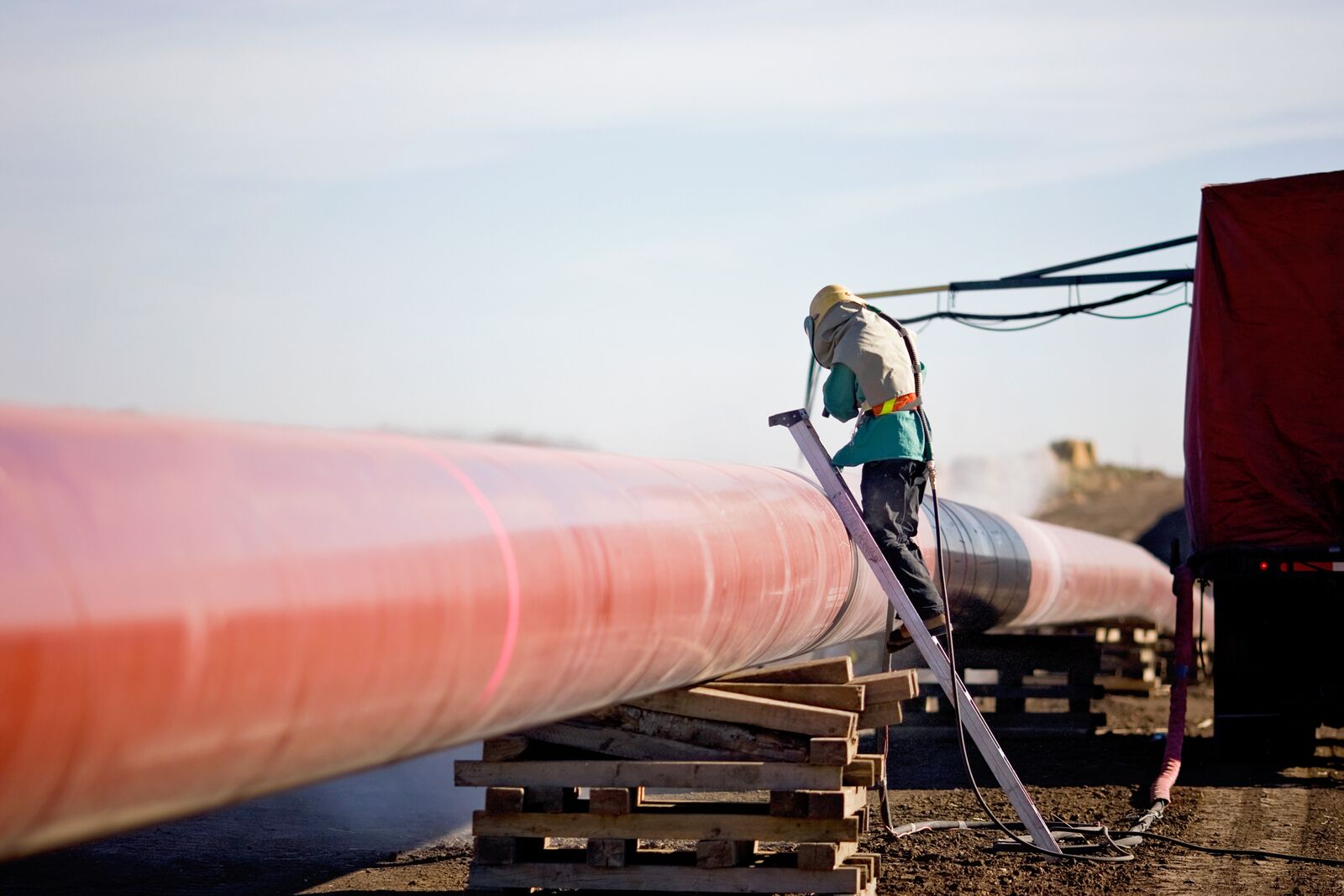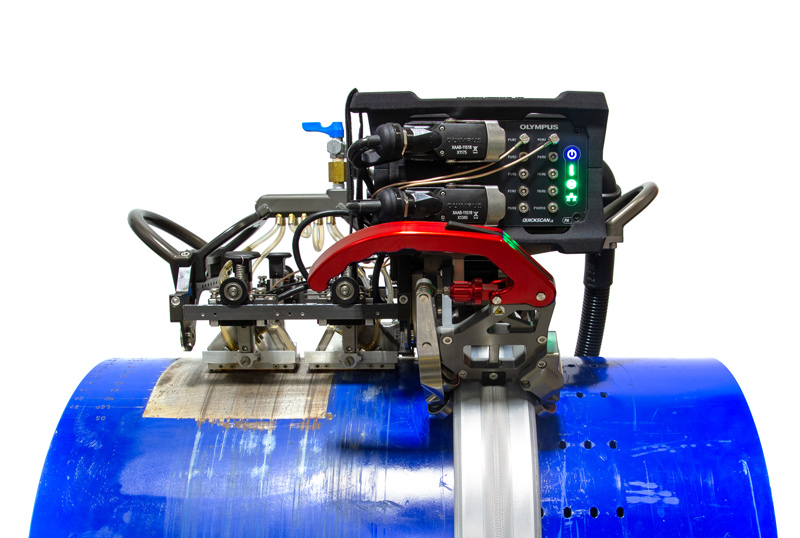
Finest Practices for Pipeline Welding Examination: Methods, Standards, and Procedures to Accomplish Quality Control and Compliance
Effective pipeline welding assessment is vital for making certain the stability and security of essential infrastructure. Understanding the intricacies included in each phase of examination is important to achieving compliance and dependability in pipeline systems.
Significance of Welding Examination
The honesty of bonded joints is vital in guaranteeing the safety and reliability of pipe systems. Proper welding methods and thorough assessment procedures are critical to stop failures that can result in devastating events, environmental damages, and loss of life. Pipeline Welding Inspection. Welding inspection functions as a safety net, determining issues such as fractures, porosity, and insufficient fusion before they rise into severe problems
Additionally, pipe systems commonly operate under high stress and extreme conditions, making the high quality of welds a lot more essential. Regulative conformity is an additional substantial aspect, as various standards determine the quality guarantee processes that need to be stuck to in pipeline building and upkeep. Failing to abide can cause financial losses and lawful implications.

The duty of welding inspection expands beyond simple confirmation of workmanship; it includes the guarantee of lasting operational stability. This entails a systematic technique that consists of not only visual assessments yet also advanced non-destructive testing methods. Eventually, efficient welding examination is an investment in the longevity and security of pipe systems, guaranteeing they operate as intended while reducing dangers connected with product shortages.
Trick Examination Techniques

Visual inspection, typically the first line of defense, permits the recognition of surface flaws such as cracks, undercuts, and porosity. Ultrasonic screening employs high-frequency acoustic waves to find internal defects, supplying an extensive analysis of weld integrity. This non-destructive technique is specifically effective for determining stoppages that may not show up externally.
Radiographic testing involves making use of X-rays or gamma rays to generate photos of the welded joint, disclosing inner defects. This method supplies thorough understandings but may require specific devices and security factors to consider. Lastly, magnetic particle screening works for detecting surface area and near-surface stoppages in ferromagnetic materials, utilizing electromagnetic fields and fine iron fragments.
Industry Requirements and Laws
Conformity with industry requirements and regulations is crucial for ensuring the quality and safety and security of pipe welding inspections. These standards provide a framework for best techniques in welding procedures, materials, and inspection strategies, allowing companies to lessen flaws and enhance the honesty of pipe systems. Key bodies such as the American Culture of Mechanical Engineers (ASME), the American Welding Society (AWS), and the International Company for Standardization (ISO) set forth standards that are extensively identified and adopted within the market.
In the USA, policies from the Pipe and Hazardous Products Safety And Security Administration (PHMSA) govern the security of pipe procedures, mandating rigorous evaluation procedures. These criteria not only offer to secure public safety and the environment yet likewise make certain conformity with legal and legal obligations. Adherence to the pertinent codes, such as ASME B31.3 for process piping, is essential for preserving operational efficiency and governing compliance.
Moreover, continuous updates and modifications to these criteria show technical improvements and advancing industry methods, stressing the requirement for companies to stay educated and train employees accordingly. Eventually, durable compliance with recognized criteria cultivates trust and dependability in pipe framework, safeguarding both stakeholders and possessions.
Efficient Evaluation Procedures
Efficient examination treatments are essential for determining prospective flaws in pipe welds and ensuring the overall integrity of the system. A methodical technique to assessment incorporates numerous vital stages, consisting of pre-weld, in-process, and post-weld examinations. Each stage plays a vital role in maintaining quality control.
Throughout pre-weld examination, it is important to evaluate the materials and joint arrangements, making certain compliance with project specifications. In-process inspections entail keeping track of welding techniques and parameters, such as heat input and travel speed, to avoid issues from taking place. This phase enables for real-time modifications to welding methods.
Post-weld evaluations include non-destructive screening (NDT) strategies like radiography, ultrasonic testing, and magnetic bit testing. These methods aid find image source interior and surface area problems that could jeopardize the pipe's functionality. Documents of all assessment activities is paramount, giving a traceable record that sustains compliance with market standards.
Educating and accreditation of inspection personnel better enhance the performance of these procedures. By adhering to an organized examination procedure, organizations can reduce risks, make sure compliance, and eventually deliver pipes that meet rigid safety and efficiency requirements.
Common Challenges and Solutions
Pipeline welding examination provides numerous usual difficulties that can influence the quality and safety and security of the last item. One significant difficulty is the irregularity in welding techniques and products, which can result in irregular weld quality. To address this, it is vital to establish standardized treatments and training for welders, ensuring a consistent approach across projects.

Ecological elements, including temperature and moisture, can likewise affect the welding process, possibly resulting in cracks or incomplete fusion. Applying regulated atmospheres and sticking to pre-weld procedures can minimize these dangers.
Conclusion
In verdict, the execution of finest techniques for pipeline welding inspection is crucial for making sure quality control and compliance with sector requirements. An extensive method, including various methods such as visual, ultrasonic, and radiographic screening, helps with the recognition of defects throughout all phases of the welding process. Pipeline Welding Inspection. Adherence to developed regulations and efficient assessment procedures not only boosts the dependability and safety and security of pipeline systems however additionally alleviates risks connected with welding issues, thus promoting general operational stability
Compliance with market criteria and policies is essential for ensuring the high quality and security of pipe welding examinations. These standards provide a framework for finest methods in welding procedures, products, and examination techniques, allowing organizations to lessen issues and boost the integrity of pipeline systems.In the United States, guidelines from the Pipe and Hazardous Products Safety And Security Management (PHMSA) control the safety and security of pipe procedures, mandating strenuous inspection protocols. A systematic method to evaluation encompasses several key phases, consisting of pre-weld, in-process, and post-weld examinations.In conclusion, the implementation of best methods for pipe welding inspection is important check my blog for guaranteeing high quality assurance and compliance with market standards.